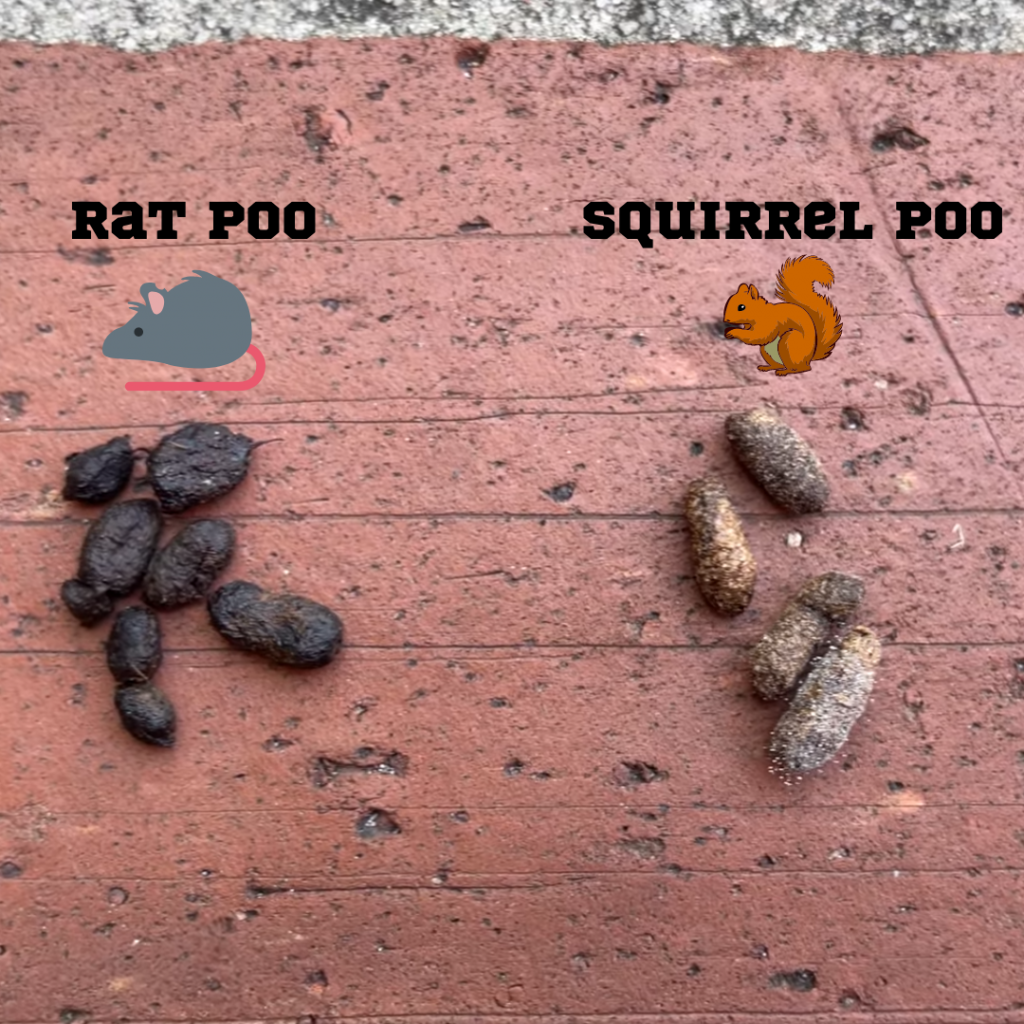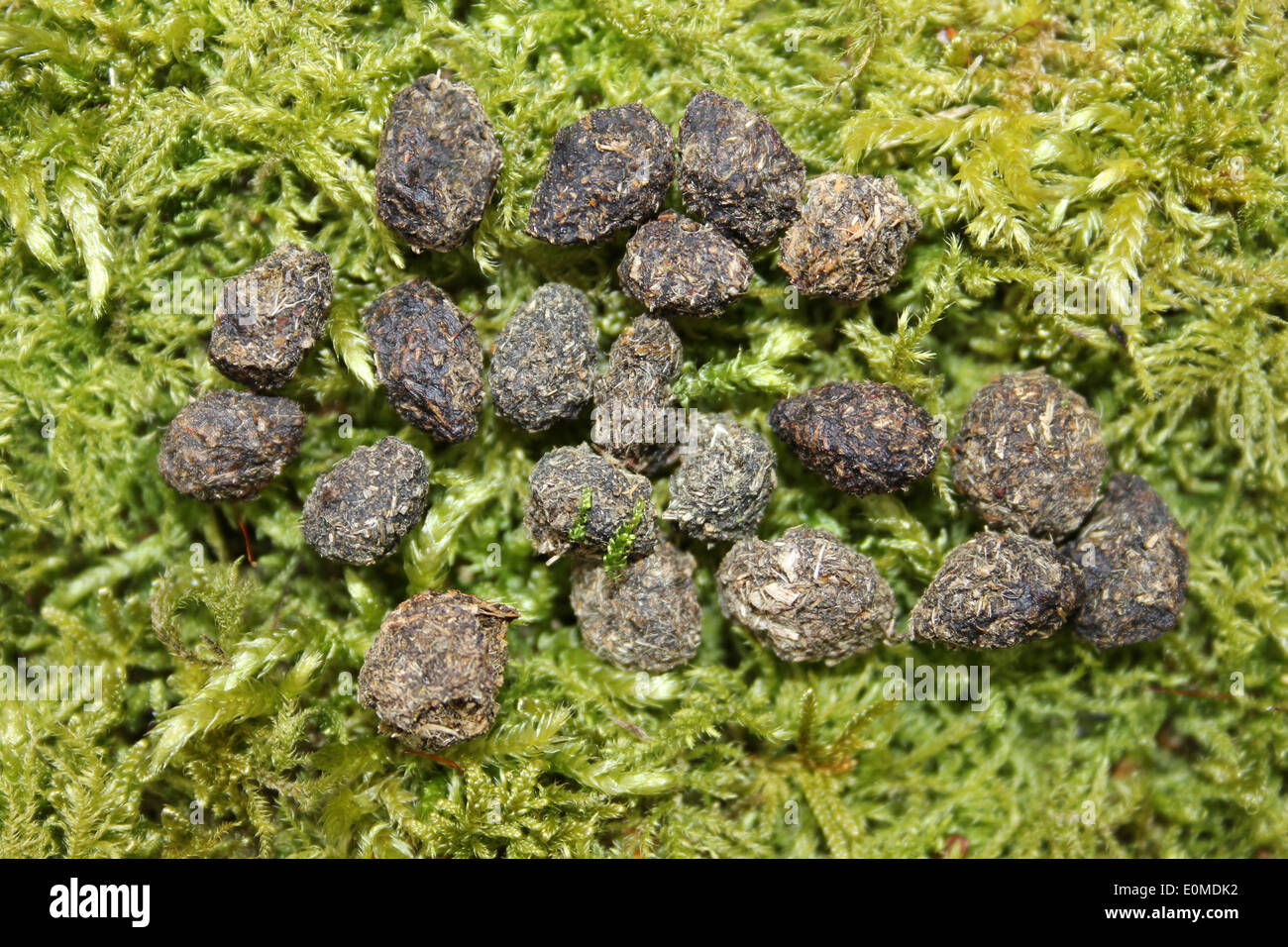Squirrel Poop - A Comprehensive Guide To Identification And Safety
Spotting squirrel droppings around your property can be more than just a nuisance; it can be a sign of potential health risks. These little critters might seem harmless as they scamper around your yard, but their droppings can carry diseases that affect humans and pets alike. Whether you're a homeowner dealing with a squirrel problem or simply curious about wildlife, understanding what squirrel poop looks like and how to handle it safely is crucial. Let's start by exploring the basics of squirrel droppings and why they matter.
When you notice something unusual near your home, like dark cylindrical shapes in clusters, it might not be garden debris or soil clumps. It could very well be squirrel poop. Learning how to spot these droppings and knowing what they indicate can save you from potential health hazards. For instance, diseases transmitted through squirrel droppings can spread if not addressed promptly. This guide will walk you through the ins and outs of identifying and managing squirrel poop effectively.
Dealing with squirrel droppings isn't always straightforward. Sometimes, it's hard to tell whether the droppings you've found are from squirrels or other critters like rats. The confusion can be frustrating, but don't worry—there are ways to tell them apart. By the end of this guide, you'll have a clearer idea of how to identify squirrel droppings, understand their implications, and take the right steps to keep your home safe and healthy.
- How To Tighten Neck Skin
- Mikey Madison Once Upon A Time In Hollywood
- Danielle Cormack
- Aron Piper
- How To Make Friendship Bracelets
What Does Squirrel Poop Look Like?
Identifying squirrel poop involves looking closely at its characteristics. These droppings tend to be small and elongated, measuring from half an inch to one inch in length. They usually have pointed ends and a glossy appearance, thanks to the undigested nuts and seeds in their diet. The color is often dark, but it might lighten over time. In some respects, this is one of the key ways to distinguish squirrel poop from other animal droppings.
For instance, rat droppings might appear similar at first glance, but they tend to stay dark and lack the pointed ends that squirrel droppings have. So, if you come across droppings in your attic or garden, check for these features. If you're still unsure, don't hesitate to call in a professional for a closer look. After all, accurately identifying the source of the droppings is the first step toward solving the problem.
How to Distinguish Squirrel Poop from Rat Poop?
One of the most common questions people ask when they find droppings is whether they belong to a squirrel or a rat. While both animals leave behind dark, cylindrical droppings, there are subtle differences that can help you tell them apart. Squirrel poop tends to be slightly larger than rat poop, with a more uniform shape and a glossy finish. Rat droppings, on the other hand, are often smaller and more tapered at the ends.
Another key difference is that squirrel poop tends to lighten in color over time, whereas rat poop stays dark. This change in color can be a good indicator of what type of critter you're dealing with. Of course, if you're still unsure, it might be worth reaching out to a wildlife expert for a second opinion. They can provide guidance based on the specific situation and help you take the right steps.
Where Can You Find Squirrel Poop?
So, where do squirrels tend to leave their droppings? Typically, you'll find them near the entrance and exit points they use to get into your home. These could be attic vents, holes in the walls, or gaps in the roof. Squirrels also like to use hiding spots, such as under insulation or in corners, as their preferred pooping areas. If you've noticed an increase in squirrel activity around your home, chances are good that there are droppings nearby.
In some cases, you might find squirrel poop in clusters around areas where squirrels are known to frequent, like your yard or garden. Keep an eye out for these signs, especially if you've noticed other signs of squirrel activity, such as gnawed wood or chewed wires. Addressing the problem early can prevent it from becoming a bigger issue down the road.
What Diseases Can Squirrel Poop Carry?
Alright, let's talk about the potential health risks associated with squirrel poop. While squirrels might seem harmless, their droppings can carry diseases that affect humans and pets. For instance, diseases like leptospirosis, salmonellosis, and tularemia can be transmitted through contact with squirrel droppings or urine. This is why it's important to clean up any droppings you find right away and take precautions to avoid exposure.
Now, cleaning up squirrel poop isn't as simple as picking it up and throwing it away. You need to use protective gear, like gloves and a mask, to minimize the risk of inhaling harmful particles. Additionally, using disinfectants and proper cleaning techniques can help ensure that the area is thoroughly sanitized. If the infestation is severe or you're unsure how to proceed, hiring a professional might be the best option.
Why Should You Care About Squirrel Poop?
Sure, squirrel poop might not seem like a big deal at first, but it can lead to some serious problems if left unchecked. For one, the presence of droppings often indicates an active squirrel infestation, which can cause damage to your home. Gnawed wires, chewed insulation, and structural damage are just a few examples of what squirrels can do. On top of that, the health risks associated with squirrel droppings can't be ignored.
So, what can you do to protect your home and family? The first step is to identify the signs of a squirrel problem, including droppings, strange noises, and visible damage. Once you've confirmed that squirrels are the culprits, you can start taking steps to remove them safely and effectively. This might involve setting traps, sealing entry points, or calling in a professional wildlife control service.
What Should You Do If You Find Squirrel Poop Indoors?
Let's say you've found squirrel poop inside your home. What's the next step? First, don't panic. While it's important to address the issue quickly, staying calm will help you take the right actions. Start by cleaning up the droppings using gloves, a mask, and disinfectants to prevent the spread of disease. Then, inspect your home for entry points that the squirrels might be using and seal them off.
It's also a good idea to check for signs of other damage, like chewed wires or insulation. These repairs can help prevent further issues down the line. If the infestation is severe or you're unsure how to proceed, don't hesitate to call in a professional. They can assess the situation and provide solutions tailored to your specific needs.
How Can You Keep Squirrels Away From Your Home?
Preventing squirrels from entering your home is often easier than dealing with an infestation after the fact. One way to do this is by sealing off any potential entry points, such as attic vents, gaps in the roof, or holes in the walls. You can also trim tree branches that are close to your home to make it harder for squirrels to access it. Another option is to use deterrents, like motion-activated sprinklers or ultrasonic devices, to keep them at bay.
Of course, no method is foolproof, but combining these strategies can significantly reduce the likelihood of a squirrel problem. Regularly inspecting your home for signs of damage or activity can also help you catch any issues early before they become more serious. If you're unsure where to start, consulting with a professional wildlife control expert can provide valuable insights and advice.
What Do Squirrels Eat and Where Do They Poop?
Understanding what squirrels eat can give you a better idea of where they might leave their droppings. These critters typically feast on nuts, seeds, fruits, and vegetables, which contribute to the glossy appearance of their droppings. As for where they poop, squirrels tend to favor areas near their entrance and exit points, as well as hiding spots like under insulation or in corners.
So, if you've noticed an increase in squirrel activity around your home, it's worth checking these areas for signs of droppings. Keep in mind that squirrels are creatures of habit, so once they establish a pooping spot, they're likely to stick with it. Addressing the problem early can help prevent it from becoming a bigger issue over time.
Finally, remember that dealing with squirrel poop and infestations requires a bit of patience and effort. By learning how to identify squirrel droppings, understanding their implications, and taking the necessary steps to manage the situation, you can protect your home and family from potential health risks and property damage.
Table of Contents
- What Does Squirrel Poop Look Like?
- How to Distinguish Squirrel Poop from Rat Poop?
- Where Can You Find Squirrel Poop?
- What Diseases Can Squirrel Poop Carry?
- Why Should You Care About Squirrel Poop?
- What Should You Do If You Find Squirrel Poop Indoors?
- How Can You Keep Squirrels Away From Your Home?
- What Do Squirrels Eat and Where Do They Poop?

What Does Squirrel Poop Look Like? Squirrel Droppings Identification

What does squirrel poop look like? - Nocturnal Animals

Grey Squirrel Sciurus carolinensis Droppings Stock Photo - Alamy